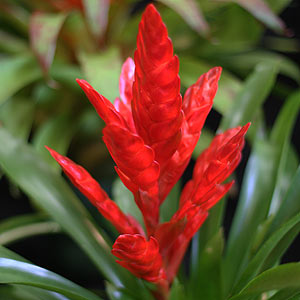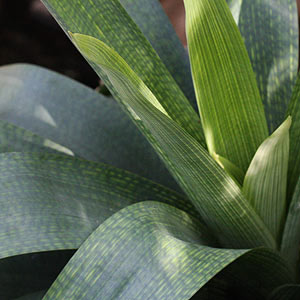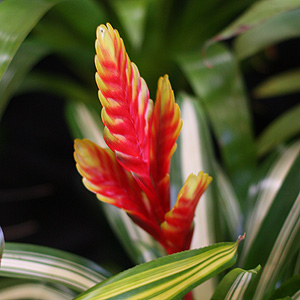
Vrieseas are a tropical bromeliad from Central and South America. They are very popular as both outdoor and indoor plants although they do require a little warmth to grow well.
In cooler areas care for Vrieseas by growing them in a hot house or indoors. They and are a popular genus with landscapers, home owners and collectors alike.
Excellent on a protected balcony or patio if they can be overwintered indoors. Although said by many to be epiphytic, this is not strictly true. Many varieties are also terrestrial as well, however the soil that the grow in provides similar conditions to those that are epiphytic.
Also put forward as being grown for the flowers, again, not really true as many varieties have outstanding foliage as well as flowers.

Vriesea Care
Vriesea like many other Bromeliads are excellent indoor plants, if you are growing them outdoors remember that do not like frosts and require a well drained potting mix.
- Light – Good strong indirect light is best. Vrieseas will quickly show symptoms or problems or either to much or to little light in the following manner. Too much light leads to elongated dark leaves
- Too little light leads to yellowing of the leaves.
- Temperature – Being a tropical plant temperatures above 55 F are required.
- Watering – Vrieseas have a tank or cup, as long as this is filled with clean water they will thrive. The water should be replaced every week or two. You can either let it dry, or tip the water out. The soil or potting medium will require watering every week or two as well.
- Fertiliser –
- Use a 1/4 strength liquid seaweed fertiliser every month from spring through to fall.
- Growing Medium – Although this is a epiphyte, it can be grown in soil as long as it has extra draining material added to it. Generally a fine orchid mix is better.

Propagation
Easy by removal of offsets or pups as is for many bromeliads
Varieties include:
- Vriesea splendens or ‘Flaming Sword’ is a very popular species.
- Vriesea carinata or ‘Lobster Claw’ is also popular.
- The large growing Vriesea imperialis is a real show stopper.
- Vriesea hyroglyphica or ‘King of the Bromeliads’
- Vriesea gigantica is from eastern Brazil and is both Terrestrial and Epiphtyic

